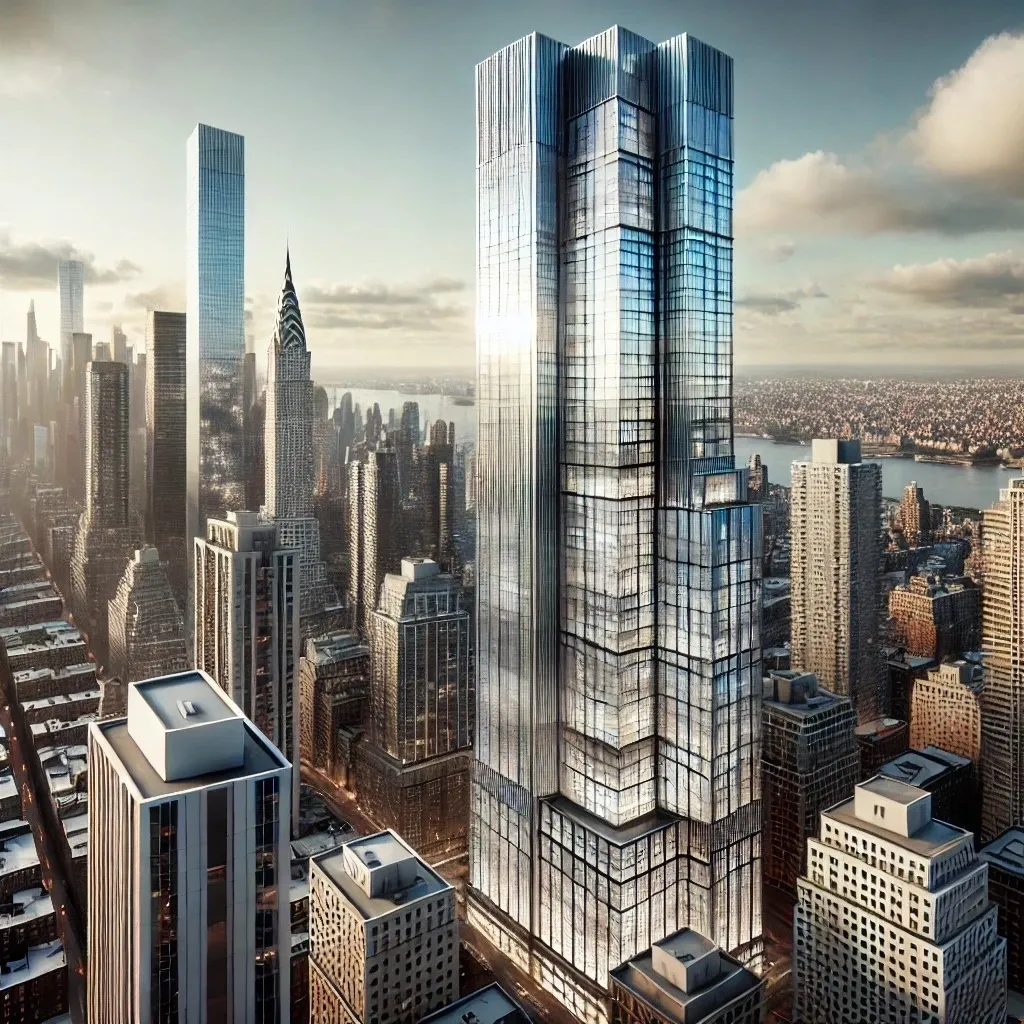New York City’s skyline is one of the most recognizable and awe-inspiring in the world, marked by an array of high-rise buildings that symbolize the city’s architectural and economic prowess. As developers and architects push the boundaries of urban design, 3D architectural visualization has become a vital tool in bringing these towering visions to life. This blog delves into a case study showcasing how 3D architectural visualization played a crucial role in the development of a high-rise skyscraper in Manhattan. We will explore the advantages of this technology, the specific challenges faced in the project, and how visualization helped address them.

The iconic skyline of New York City.
What is 3D Architectural Visualization?
3D architectural visualization involves creating three-dimensional images and animations of buildings and spaces before they are constructed. These visualizations are crucial for showcasing how a project will look and function, allowing stakeholders to experience the design in a realistic and immersive way.
Key aspects of 3D architectural visualization include:
- Photorealistic Renderings: Detailed and lifelike images that provide a clear understanding of the final product.
- Virtual Tours: Interactive experiences that allow users to explore the design from various angles and perspectives.
- Animations: Moving visuals that show the building in different scenarios, such as varying times of day or different seasons.
Case Study: The Midtown Manhattan Skyscraper
Project Overview
The project under study is a 65-story mixed-use skyscraper located in Midtown Manhattan. The development includes high-end residential units, office spaces, and luxury retail outlets. The design is ambitious, featuring a sleek, modern aesthetic with a unique facade and a rooftop terrace that offers stunning views of the city.
3D rendering of a high-rise skyscraper, showcasing modern architectural design.
Challenges Faced
- Complex Design: The skyscraper’s intricate facade and multi-use functionality posed significant challenges in visualization. The design included numerous angles, reflective surfaces, and detailed textures that needed to be accurately represented.
- Stakeholder Communication: With various stakeholders involved—including investors, city planners, and potential tenants—it was crucial to provide a clear and comprehensive representation of the project to align everyone’s expectations and secure approvals.
- Urban Integration: Integrating the new skyscraper into the existing urban fabric of Midtown Manhattan required a visualization that demonstrated how the building would fit within the skyline and its impact on the surrounding area.
The Role of 3D Architectural Visualization
3D architectural visualization played a pivotal role in addressing the challenges faced during this project. Here’s how:
1. Accurate Representation of Complex Design
To tackle the complexity of the skyscraper’s design, the visualization team created highly detailed 3D models that captured every facet of the building’s exterior. This included:
- Detailed Facade Textures: Representing the reflective glass and unique patterns on the building’s facade.
- Lighting Simulations: Showing how natural and artificial light would interact with the building throughout the day and night.
- Material Representations: Accurately depicting the high-quality materials used, such as glass, steel, and stone.
High-detail 3D rendering showcasing intricate facade textures.
2. Enhanced Stakeholder Communication
The project team utilized 3D renderings and virtual tours to facilitate communication among stakeholders:
- Investor Presentations: High-quality renderings and animations helped investors visualize the potential returns on their investment and understand the project’s scope.
- City Planning Approvals: Detailed visualizations were used to demonstrate how the skyscraper would fit within the existing urban landscape, helping to secure necessary approvals and permits.
- Marketing Materials: The renderings were also used in promotional materials to attract potential tenants and buyers by showcasing the building’s luxury features and prime location.
3D visualizations used in investor presentations.
3. Urban Integration and Impact Analysis
To ensure the skyscraper would integrate seamlessly into the Midtown Manhattan skyline, the visualization team created:
- Contextual Renderings: Visualizations showing the skyscraper from various vantage points around the city to illustrate its impact on the skyline and surrounding buildings.
- Sunlight and Shadow Analysis: Animations demonstrating how the building would cast shadows and interact with sunlight, addressing concerns about its impact on neighboring properties.
Urban integration rendering showing the skyscraper’s impact on the skyline.
Results and Benefits
The use of 3D architectural visualization brought several key benefits to the project:
- Design Validation: The detailed renderings allowed the design team to identify and address potential issues before construction began, leading to a smoother building process.
- Increased Stakeholder Confidence: High-quality visualizations helped to build trust and confidence among investors and stakeholders, leading to quicker approvals and smoother project execution.
- Enhanced Marketing: The renderings were instrumental in generating interest and excitement for the project, attracting high-profile tenants and buyers.
Conclusion
The development of skyscrapers in New York City represents the pinnacle of architectural innovation and urban planning. In such high-stakes projects, 3D architectural visualization proves to be an invaluable tool, offering accurate representations, facilitating communication, and ensuring design integrity.
The case study of the Midtown Manhattan skyscraper illustrates the transformative impact of 3D visualization on modern architecture. By providing detailed, photorealistic images and interactive experiences, this technology not only helps in visualizing the final product but also plays a crucial role in achieving project success.
As the city continues to evolve and new skyscrapers rise on the horizon, the role of 3D architectural visualization will remain central in shaping the future of New York’s iconic skyline.
The evolving skyline of New York City.

3D rendering of a high-rise skyscraper in New York City, showcasing modern architectural design.